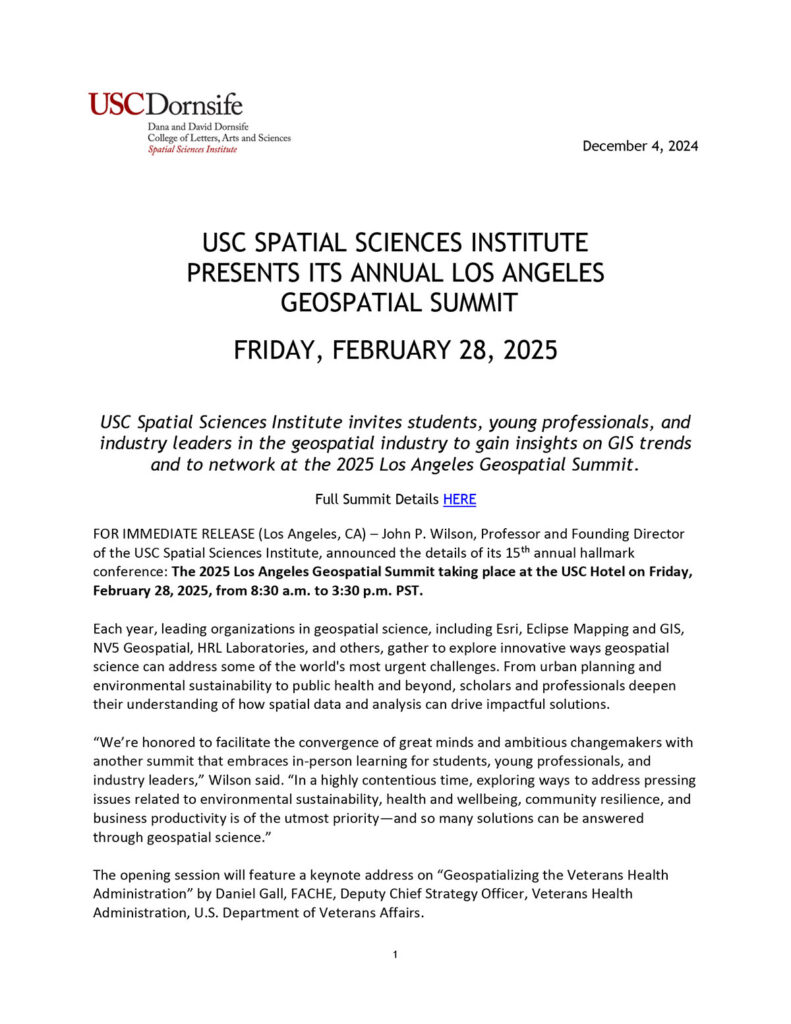
Putting the Los Angeles Geospatial Summit on the map
As a leading force in the field of spatial sciences, the University of Southern California Spatial Sciences Institute (USC SSI) hosts the annual Geospatial Summit, a premier event that brings together thought leaders, researchers, and professionals to explore the latest advancements and applications in geospatial technology.
For the past 10 years, USC SSI has called on us to promote the event to their audience of professionals, academics, and industry leaders.
Objective and challenge
In 2025, USC SSI set an ambitious goal: to further elevate the summit’s profile, boost attendance, and increase engagement, building on the success we’ve achieved in years past.
The challenge? Effectively reaching even more members of a highly specialized audience of geospatial professionals and academics.
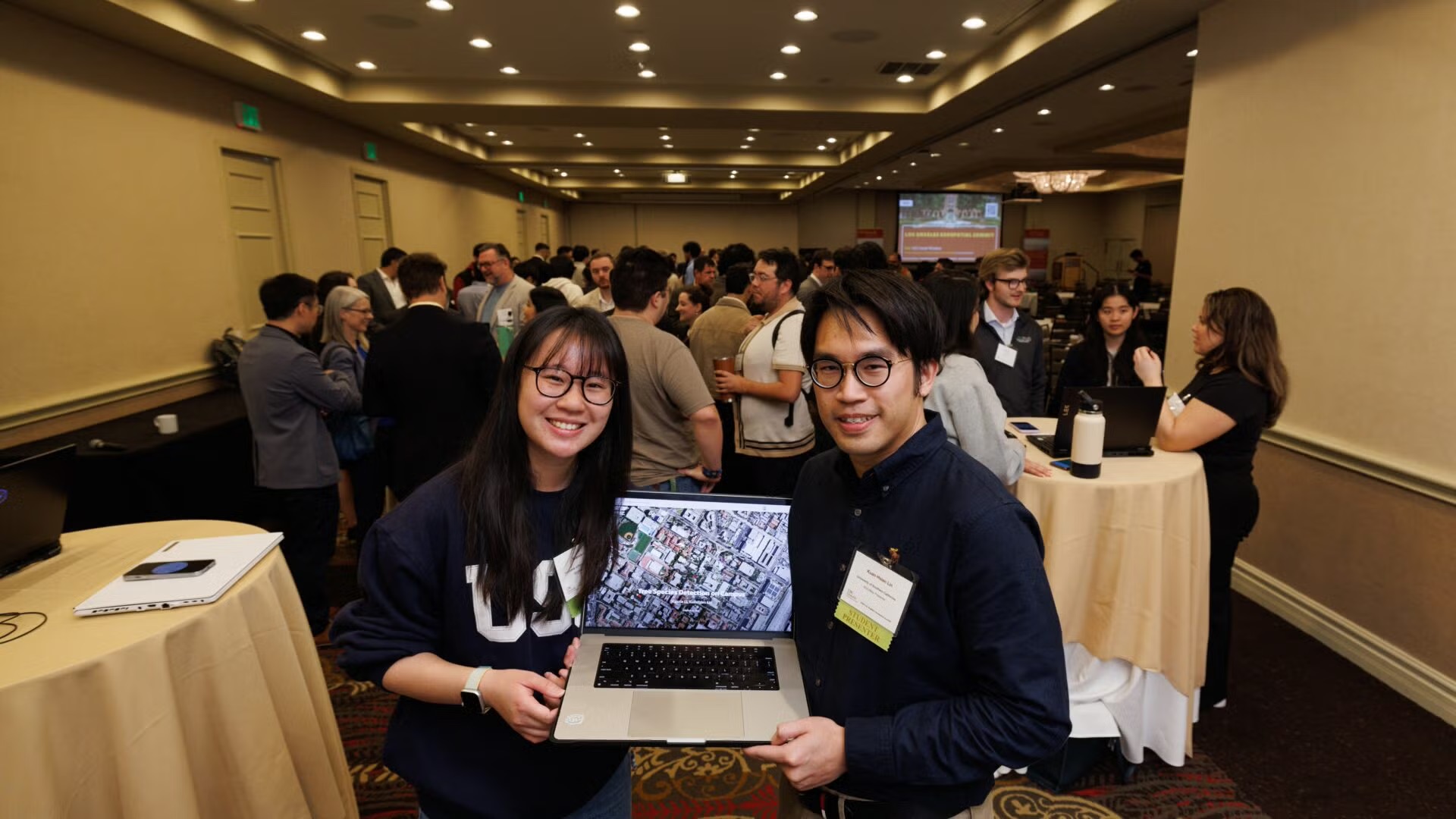
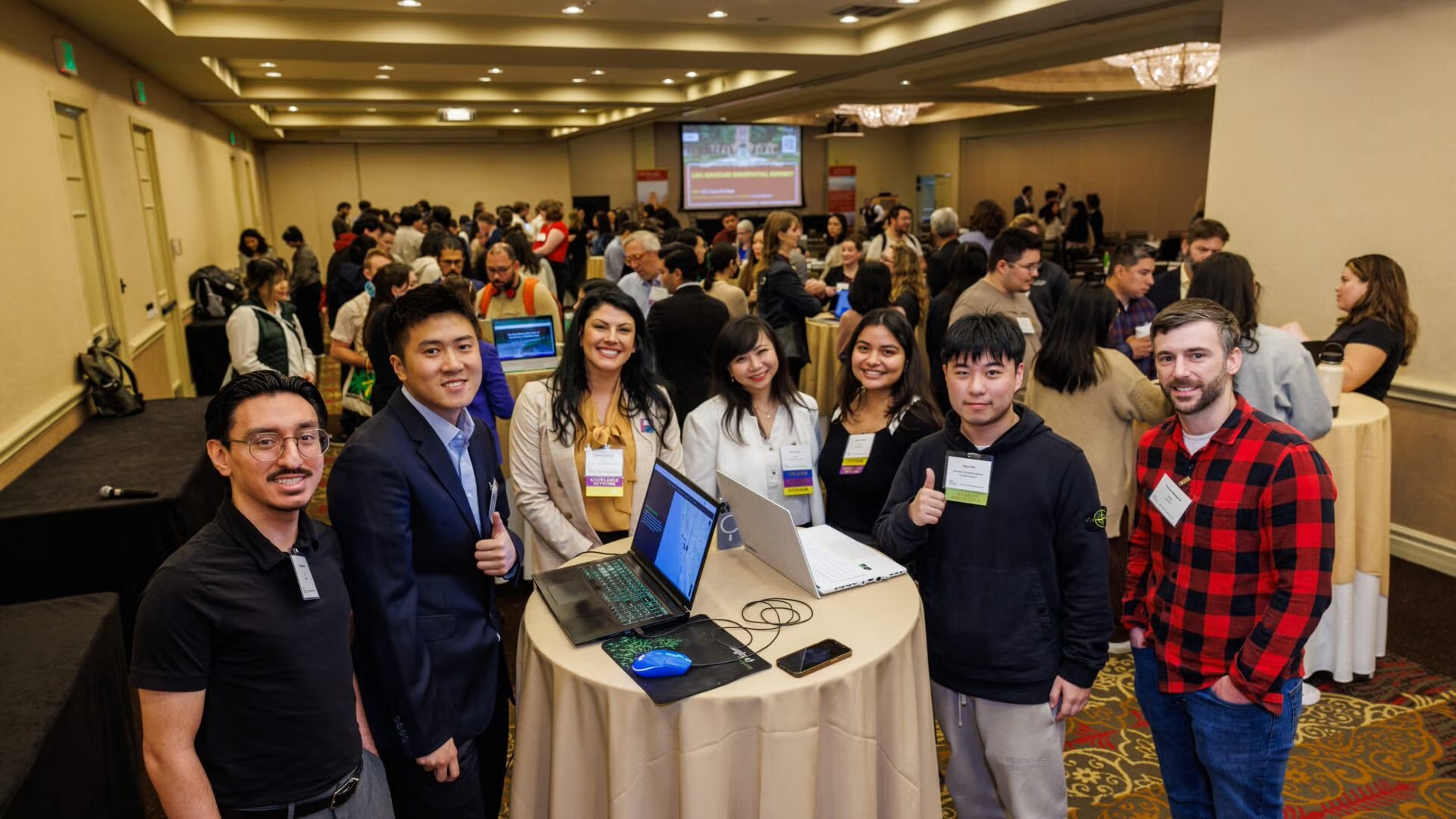
Strategy and execution
To drive awareness and registrations, we implemented a multi-channel strategy:
- Press outreach: We developed and distributed a press release, and provided targeted outreach to key reporters and editors, securing media coverage in relevant industry publications.
- Social media management: We created targeted content and engagement campaigns across platforms.
- Targeted digital advertising: Launched paid campaigns on Facebook and LinkedIn to reach geospatial professionals and academics.
The results?
Press coverage
20 pickups
Social success
8.08% Engagement rate
Attendance
Record-breaking!
Press coverage
Our efforts this year garnered 20 media pickups in leading industry publications, including GPS World, Geoawesome, GISuser.com, ATE Central, Coordinates.net, Geoforall Newsletter, and Engineering News Today.
Media pickups are a key indicator of public and professional interest, especially when coverage appears in specialized outlets. This extensive media reach increased the summit’s visibility, positioning USC SSI even more as a thought leader in the spatial sciences field.
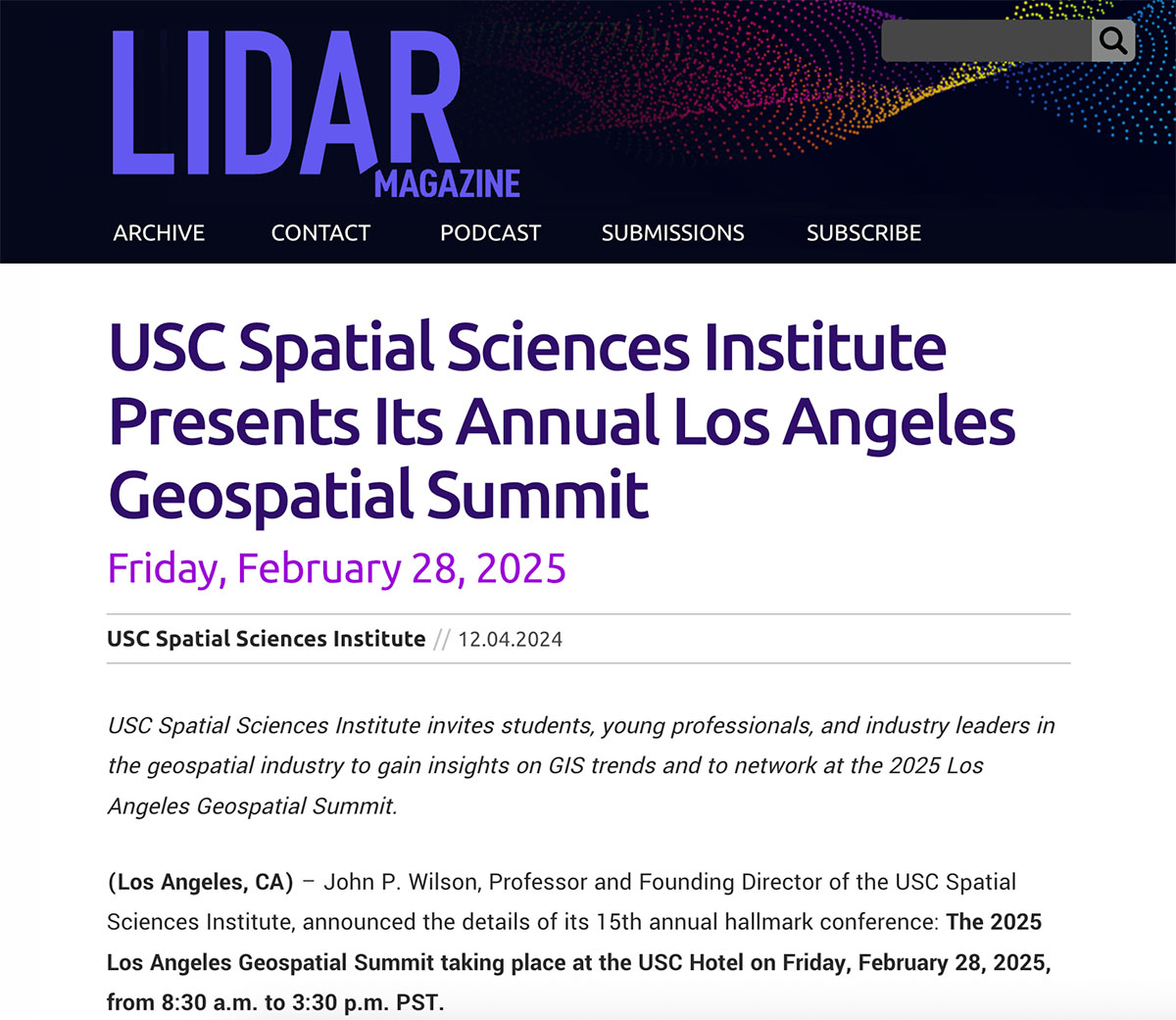
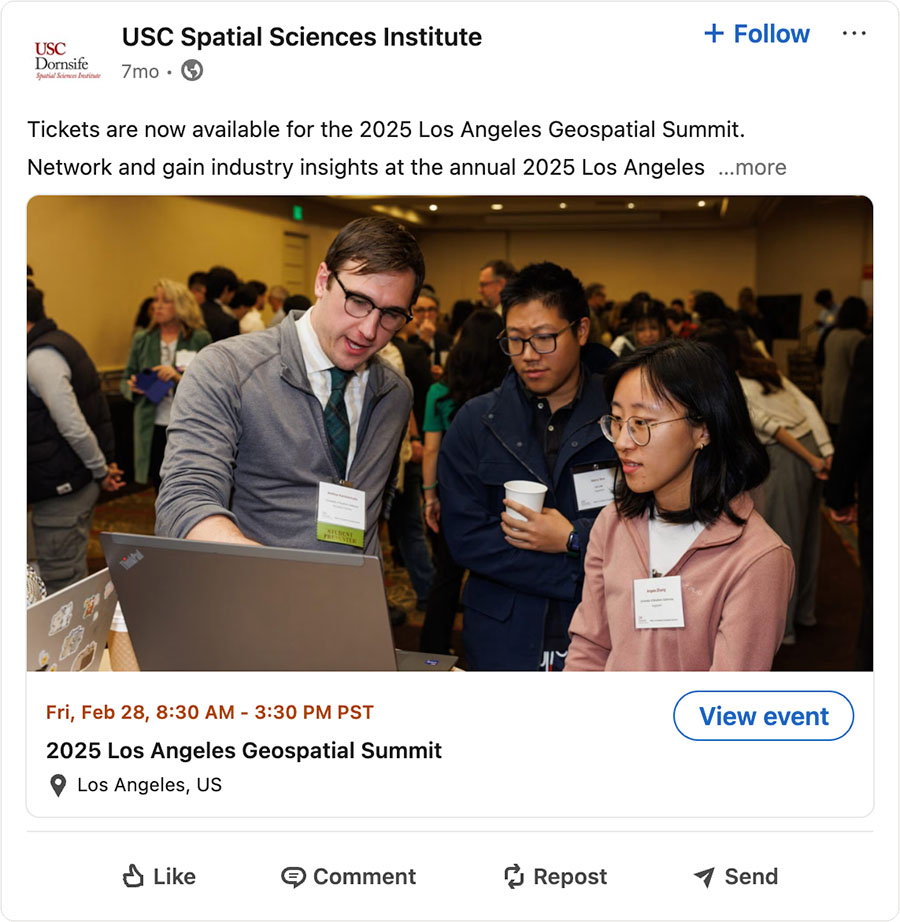
Social and digital performance
LinkedIn impressions, clicks, and click-through rates increased significantly year-over-year.
Both paid ads and organic engagement played vital roles in driving registrations, showing that a balanced strategy that combines targeted advertising with organic community-building can effectively boost event participation.
“For over a decade, we’ve relied on Counterintuity to take the lead on the digital marketing and strategy of our programs. They’ve helped us launch and sell out our annual global summit, drawing scholars from around the world and gaining us significant press coverage to boot. We always know we can count on them to deliver”
— John Wilson
Thank you, John.
